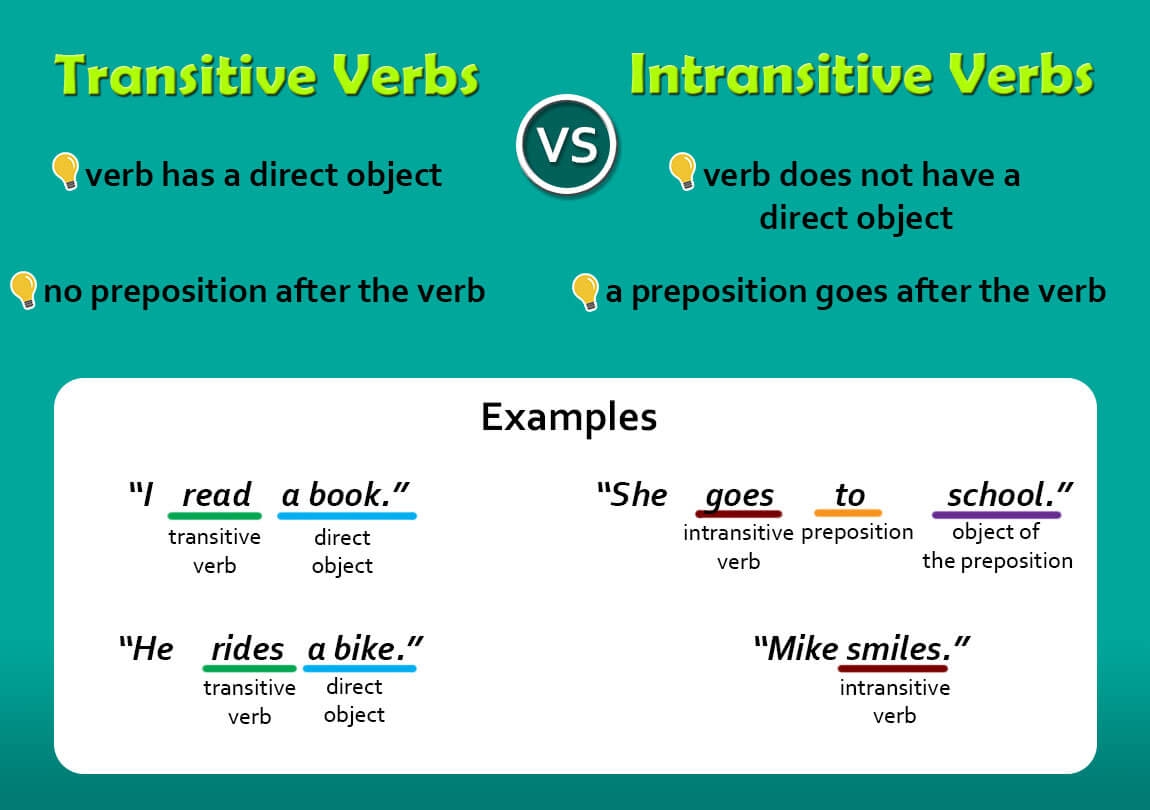Verbs play a crucial role in forming sentences and conveying actions in the English language. Understanding the difference between transitive and intransitive verbs is essential for constructing clear and meaningful sentences. Transitive and intransitive verbs have distinct characteristics that dictate how they function in a sentence.
Transitive verbs require a direct object to complete their meaning, while intransitive verbs do not. This fundamental difference influences the structure and syntax of sentences, making it important to recognize and use them correctly in writing and communication.
Transitive Verb and Intransitive Examples
Transitive verbs are action verbs that require a direct object to receive the action. For example, in the sentence “She ate the apple,” the verb “ate” is transitive because it takes an object, which is “the apple.” Without the object, the sentence would be incomplete. Other examples of transitive verbs include “read,” “write,” “paint,” and “build.”
In contrast, intransitive verbs do not require a direct object to complete their meaning. These verbs express action without transferring it to an object. For instance, in the sentence “He sleeps peacefully,” the verb “sleeps” is intransitive because it does not require an object to make sense. Other examples of intransitive verbs include “arrive,” “laugh,” “cry,” and “run.”
It is important to note that some verbs can function as both transitive and intransitive, depending on the context of the sentence. For example, the verb “run” can be transitive in the sentence “She runs a marathon” or intransitive in the sentence “He runs every morning.” Understanding the nuances of these verbs can help clarify their usage in different situations.
Additionally, the presence or absence of a direct object can impact the meaning and interpretation of a sentence. Using transitive and intransitive verbs correctly can enhance the clarity and coherence of writing, leading to more effective communication and understanding among readers.
Overall, the distinction between transitive and intransitive verbs is crucial for mastering the English language and creating well-structured sentences. By recognizing the characteristics and examples of these verbs, writers can improve their grammar and convey their thoughts more accurately. Practicing the use of transitive and intransitive verbs will enhance language skills and contribute to effective communication in various contexts.
In conclusion, understanding the difference between transitive and intransitive verbs is essential for constructing clear and meaningful sentences in English. By familiarizing oneself with the examples and characteristics of these verbs, individuals can improve their writing skills and communicate effectively in both spoken and written forms.
